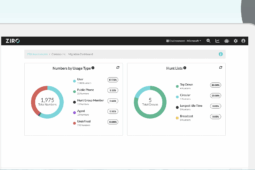No, Plain Old Telephone Service Isn’t Dead. Get the Facts About the FCC’s New Deregulation Order.

On August 2, 2022, the FCC’s Plain Old Telephone Service (POTS) Deregulation Order went into effect, and there is a lot of misinformation out there about it. This doesn’t need to be such a hassle. I’ll help you make sense of it and what it means for your organization.
Know what you’re looking for? Skip ahead…
- What is Plain Old Telephone Service?
- What is the FCC Order and when did it go into effect?
- How have Telecommunications Providers responded?
- How will this impact your organization?
TL;DR
- Although businesses are steadily moving away from POTS lines in favor of digital technologies, many companies are still utilizing these copper analog lines for a variety of use cases.
- The FCC is using its latest ruling, which went into effect on August 2, 2022, to incentivize telecommunications carriers (telcos) to invest in next-generation fiber networks, broadband, and wireless technologies.
- Despite what you might hear, POTS lines are not going away immediately. This Order only removes the obligations to provide these services; the FCC has not ordered a full-scale POTS decommissioning this year.
- Prices for POTS will skyrocket due to this ruling. You should start thinking now about making the move to digital or next-generation technologies if you haven’t already.
- ZIRO can answer any questions about this Order and help you understand your options.
What is Plain Old Telephone Service?
Plain Old Telephone Service (POTS) is the basic telephone call service that individuals and businesses have been using since the 1880s. It’s the traditional, analog voice transmission phone system implemented over physical copper wires.
Today, POTS is steadily being abandoned in favor of digital technologies. There is no doubt that VoIP is certainly more powerful and, in most cases, less expensive than POTS lines. However, the former can be complicated to implement and requires a reliable network. For these reasons, POTS is often considered a base layer in communications redundancy for broadcast and critical communications networks.
Despite the trend of businesses moving away from these plain old telephone services to a more current VoIP or SIP solution, many companies are still utilizing these copper analog lines for a variety of purposes, including:
- Analog lines used for 911 purposes (red phones)
- Emergency backup phone lines
- Security alarms, fire systems, elevators, gates, intercoms, postage meters/machines
- Fax lines
- Modems
- DSL-based Internet Access (often used as a backup to primary broadband Internet access)
- Retail locations (or smaller businesses)
- Rural locations
With POTS, the phone companies provide the power. This makes it especially well-suited for life safety use cases, where the phone line will remain available in case of a power outage.
What is the FCC Order and when did it go into effect?
In August 2019, the FCC announced they would finally remove the burden on Incumbent Local Exchange Carriers (ILECs) to provide Plain Old Telephone Service through analog lines to both direct customers (residential and business) and wholesale customers – such as Competitive Local Exchange Carriers (CLEC) and other service providers – ‘renting’ these analog loops.
FCC Order 19-72A1 officially went into effect on August 2, 2022.
Notably, POTS lines may remain available at the discretion of the telco into 2022 and even 2023, but prices will be deregulated and thus may increase significantly (in part to force customers to migrate to alternative solutions).
This is already happening in other countries around the world. Australia will be completely switching off POTS in 2022, and the UK will join them in 2025.
This ruling will affect the following technology:
- Analog lines (1FL / POTS lines)
- Analog-based CENTREX
- Analog-based tie trunk (private copper line rented from telco to interconnect legacy PBX to a remote analog device)
- ISDN circuits (PRI, T1, T3)
- DSL
How have Telecommunications Providers responded?
Unfortunately, many phone companies have employed scare tactics in response, claiming the FCC is mandating them to turn off POTS with this ruling to decommission analog-based circuits as soon as possible. They falsely claim POTS is dead.
This has many organizations understandably worried and feeling pressure to act quickly. Thankfully, this order does NOT require phone companies to shut off their own customers’ POTS lines this year, nor does it set a mandatory sunset date for POTS lines from local carriers.
On the contrary, this order only removes the obligations to provide these services. Turning off POTS completely right away is impossible, as there are no available alternative solutions in many cases. According to the FCC, there were still 36M POTS lines in 2021. Most providers are currently in the process of decommissioning POTS, but this will not be a quick process by any means.
The bottom line is that your local phone carrier will decide when it is time to end POTS service, but the FCC has not ordered a full-scale POTS decommissioning this year.
How will this impact your organization?
As mentioned, this FCC deregulation order is expected to cause prices for POTS to skyrocket. While these lines aren’t expected to disappear overnight, you should start thinking about making the move to digital or next-generation technologies if you haven’t already.
While you’ll avoid significant price increases, there are other benefits, too—particularly when it comes to modernizing your data and voice services.
With a VoIP solution or a cloud-based communication platform, you can support remote and hybrid workforces with increased speed and reduced latency. And with SIP as an underlying protocol—which delivers data over the internet rather than an analog phone line—your employees can do anything from sending text messages to hosting video calls anywhere in the world, on a flexible, secure, reliable platform.
Here is some potential replacement technology you might want to consider:
- Fiber
- LTE / 5G
- Broadband (coax)
- StarLink / satellite
- For telephony, use one of the connectivity methods above combined with an Analog Telephony Adapter (ATA) and VoIP/UCaaS service. Some vendors will offer routers with embedded analog ports (i.e. LTE/5G Router+ATA combined in a single box).
- Fax over IP solutions
With the above alternatives, power backup and redundancy in case of a local power failure may be a problem for both the local telephony equipment — such as an Analog Telephone Adapter (ATA) — and for connectivity (via a router, broadband modem, etc.). This means that an Uninterruptible Power Supply (UPS) or equipment with an embedded battery backup would be required, and alternative connectivity through LTE can be considered in lieu of the primary wired fiber or coax connectivity.
Final thoughts
If you’re not sure where to start, ZIRO can help! We can answer any of your questions about the new FCC deregulation order or help you identify the best alternatives for your unique environment. Contact us today or call +1-844-940-1600.
Ready to take your unified communications from headache to hassle-free?
No throwing darts at proposals or contracts. No battling through the back-end. No nonsense, no run-around.



